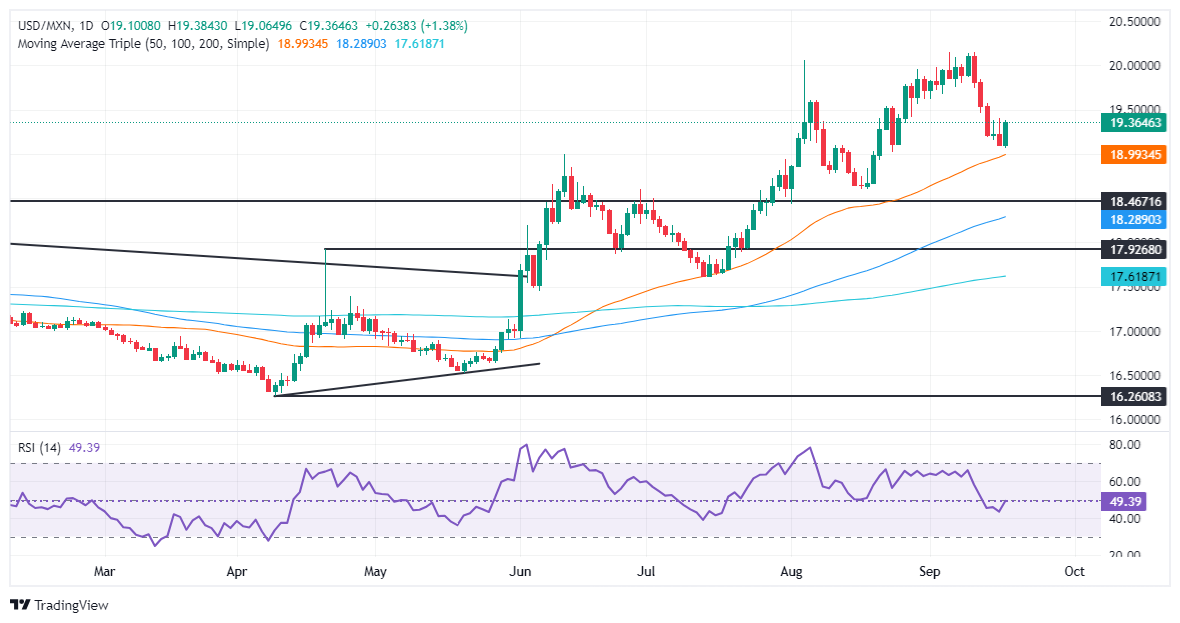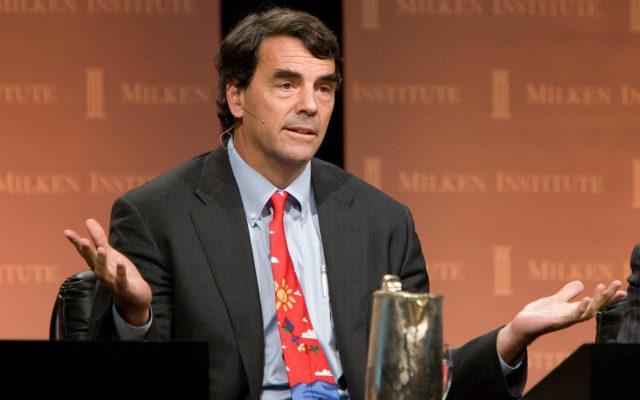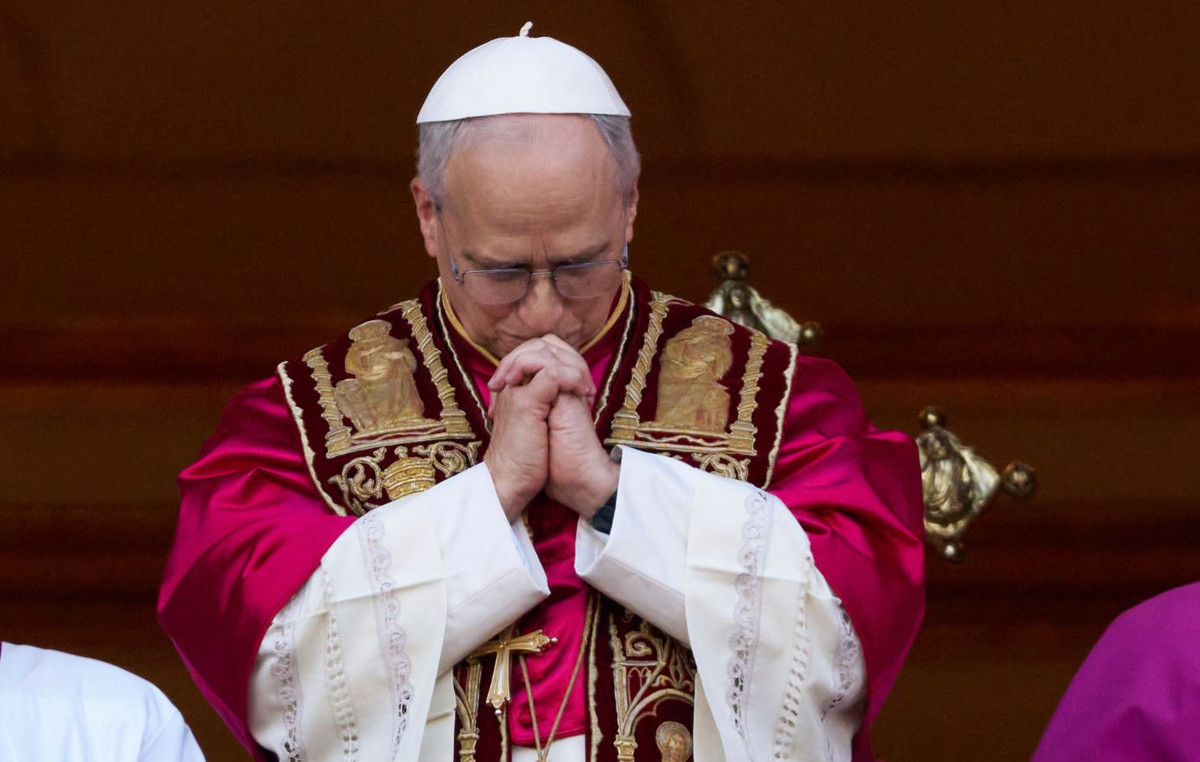- The Mexican peso depreciates more than 0.80% as traders await the Fed’s first rate cut in four years.
- Fed cuts rates by 50 basis points, but USD/MXN holds on to previous gains.
- Mixed second-quarter data in Mexico and concerns over judicial reform may reduce investment attractiveness, increasing peso volatility.
The Mexican Peso fell against the US Dollar during the North American session on Wednesday, dropping over 0.80% after the Federal Open Market Committee (FOMC) decided to cut borrowing costs by 50 basis points. Data from Mexico was mixed, though it failed to boost the Mexican currency. At the time of writing, the USD/MXN is trading at 19.26 after having touched a low of 19.06.
Federal Reserve policymakers decided to cut borrowing costs on the basis of confidence that inflation is moving “sustainably” toward the bank’s 2% target. However, they acknowledged that the dual mandate of price stability and maximum employment is now roughly balanced, though they noted that the economic outlook remains uncertain.
The Fed’s decision was not unanimous, as Governor Michelle Bowman dissented in the vote, favoring a rate cut of less than a quarter of a percentage point.
The Summary of Economic Projections (SEP) shows that the U.S. central bank estimated that interest rates will end at 4.4% in 2024 and 3.4% in 2025. Inflation, as measured by the Core Personal Consumption Expenditures (PCE) Price Index, is projected to reach the Fed’s 2% target by 2026, but is still projected to end at 2.6% in 2024 and 2.2% in 2025.
Fed officials also project the economy will grow at a 2% pace in 2024, with the unemployment rate rising to 4.4% by year-end.
During his press conference, Fed Chairman Jerome Powell stated that inflation risks have diminished and reaffirmed that the economy remains strong. He noted that if inflation persists, “we can adjust policy more slowly” and emphasized that the SEP indicates that the Committee is in no hurry to normalize policy.
Although USD/MXN fell slightly after the FOMC decision, buyers stepped in and pushed the exotic pair back towards current exchange rates. Meanwhile, eyes are on the Bank of Mexico (Banxico), which is expected to cut rates by 0.25% at the September 26 monetary policy meeting decision.
Meanwhile, Victor Manuel Herrera, President of the Mexican Institute of Financial Executives (IMEF), commented that judicial reform and the disappearance of autonomous bodies could affect the economy in Mexico and reduce the attractiveness of investment, given the phenomenon of companies relocating from the US.
Daily Market Summary: Mexican Peso Pressured by Weak Mexican Data and Fed Decision
- USD/MXN is expected to continue to be driven by market sentiment and expectations of further Fed rate cuts.
- Mexico’s Aggregate Demand in the second quarter contracted by -0.4%, below the previous reading of 1.2%. Private Spending in the second quarter fell by 0.6% and lagged behind the 1.8% expansion in the first quarter.
- US Building Permits in August grew 4.9% month-over-month, from 1.406 billion to 1.475 billion.
- Housing starts increased by 9.6% and rose from 1.237 million to 1.356 million.
USD/MXN Technical Outlook: Mexican Peso Falls as USD/MXN Holds Gains Above 19.30
The USD/MXN uptrend remains intact, although the FOMC decision could shake up the market sharply and increase volatility. The momentum suggests that the bulls are gaining strength, as shown by the Relative Strength Index (RSI).
If USD/MXN rises above 19.50, the next resistance would be the psychological level of 20.00. Further upside, the yearly high appears at 20.22, followed by the 20.50 mark.
Conversely, if USD/MXN falls below 19.15, key support levels emerge, such as the August 23 daily low of 19.02, ahead of the 50-day simple moving average (SMA) at 18.99.
Banxico FAQs
The Bank of Mexico, also known as Banxico, is the country’s central bank. Its mission is to preserve the value of Mexico’s currency, the Mexican Peso (MXN), and to set monetary policy. To do so, its main objective is to maintain low and stable inflation within target levels (at or near its 3% target, the midpoint of a tolerance band of between 2% and 4%).
Banxico’s main tool for guiding monetary policy is setting interest rates. When inflation is above the target, the bank will try to control it by raising rates, making it more expensive for households and businesses to borrow money and thus cooling the economy. Higher interest rates are generally positive for the Mexican Peso (MXN), as they generate higher returns, making the country a more attractive place for investors. Conversely, lower interest rates tend to weaken the MXN. The rate differential with the Dollar, or how Banxico is expected to set interest rates compared to the US Federal Reserve (Fed), is a key factor.
Banxico meets eight times a year and its monetary policy is heavily influenced by decisions of the US Federal Reserve (Fed). Therefore, the central bank’s decision-making committee usually meets a week after the Federal Reserve. By doing so, Banxico reacts to and sometimes anticipates the monetary policy measures set by the Federal Reserve. For example, after the Covid-19 pandemic, before the Fed raised rates, Banxico did so first in an attempt to decrease the chances of a substantial depreciation of the Mexican Peso (MXN) and avoid capital outflows that could destabilize the country.
Source: Fx Street
I am Joshua Winder, a senior-level journalist and editor at World Stock Market. I specialize in covering news related to the stock market and economic trends. With more than 8 years of experience in this field, I have become an expert in financial reporting.








